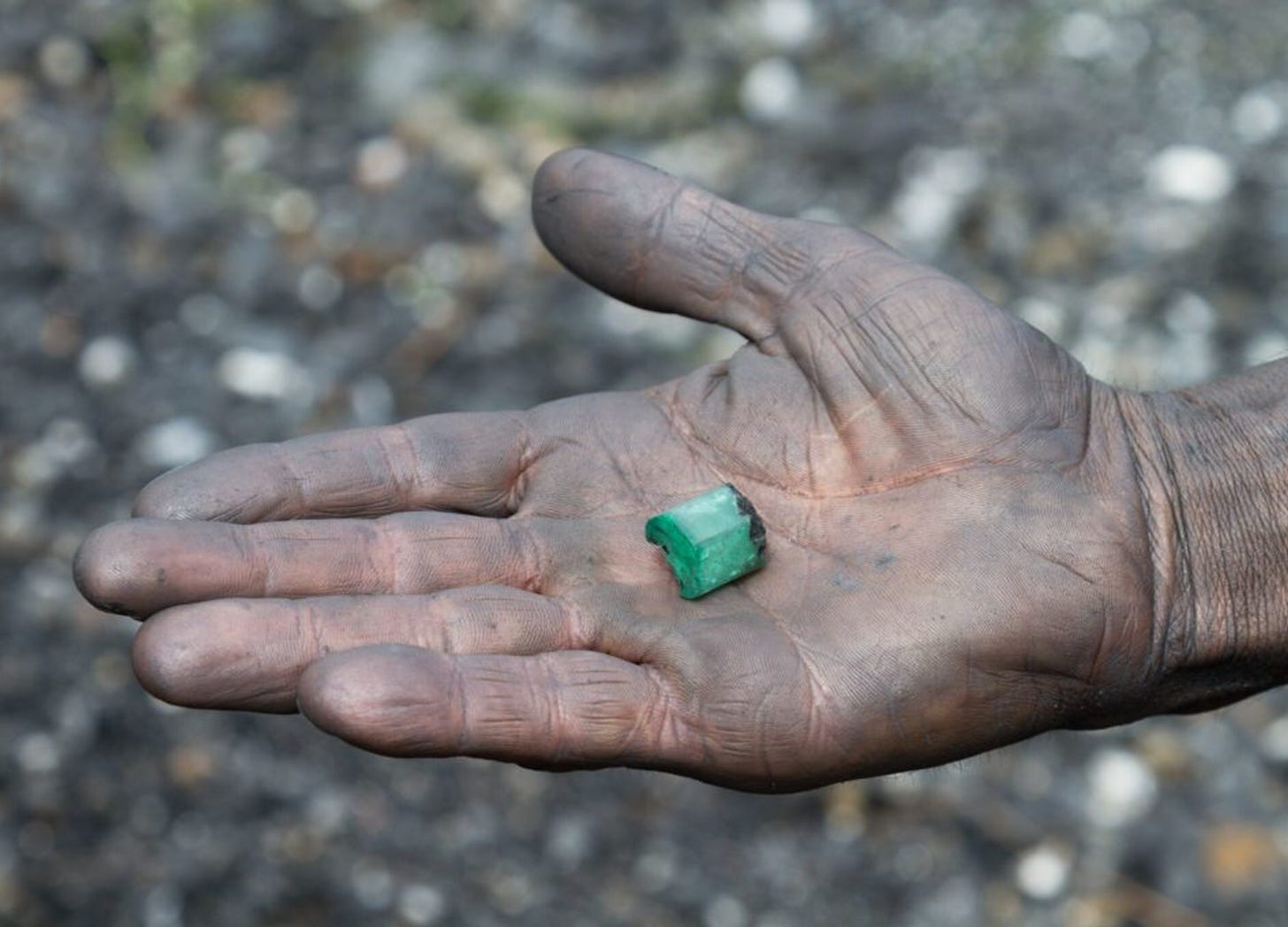6/ Our Core Things: Sustainable crystals, owning your power & more…
🎙 How to own your power | 🧠 Ethical crystals and where to find them
Hey there, welcome to Issue #6!
This past week, I had several conversations about self-expression and creativity. Self-expression, and the ability to use our voice is important for our individuality and for our health.
In the late 1980s, Harvard-trained psychologist Dana Jack found that women’s tendency to ‘self-silence’ was linked to an increased risk of depression. In energetic terms, the throat chakra is related to communication, self-expression and the ability to speak your truth. When the throat chakra is blocked or imbalanced, the individual may find it hard to express their personal truths.
I suppressed some of my true thoughts and feelings a lot in the past, due to the want of belonging and fear of saying the wrong thing. But I’ve realised that certain things left unsaid can lead to resentment, and is also detrimental to our mental and physical health. I found journalling, making art (painting!) and speaking to close friends really cathartic for my own self-expression. I’d love to hear what has helped you too!
In this week’s issue:
Wellness: Why things change for the better when you express your truth | Annalie Howling
Sustainability: Ethical crystals and where to find them
Product: She’s Lost Control Crystals
Inspiration
Our primary relationship is really with ourselves. Our relationships with other people constantly reflect exactly where we are in the process. - Shakti Gawain
Wellness: How to own your power | Annalie Howling
🎙Listen Time: 45 mins
In this week’s episode, I speak to Annalie Howling, trauma specialist, elite performance coach, creator and speaker. The content she shares on instagram really speaks to me, especially her recent post about trusting in our power.
“We do know underneath it all when we’re holding back, when we’re playing it safe, when we’re not honestly owning our power.” - Annalie Howling
Owning our power can mean many things, from the ways we set our boundaries with family and friends, to choosing to stand firm on a goal or a dream and moving closer to it day by day. Is there anything you can do today, or this week to stand more firmly in your power and speak more of your truth?
Overview:
Background as trauma specialist
Being courageous and speaking your truth
Following what gives you energy to find alignment
How to connect with your internal compass
Self-care movement & commercialisation of wellness
Showing up on socials while balancing life
Why your business should evolve with you
From self-care to self-sustainability
Connect with Annalie:
Website: www.annaliehowling.com
Instagram: @annaliehowling
Sustainability: Ethical crystals and where to find them
👁Read Time: 3 mins
Social media friendly aesthetics, wellness culture and modern spirituality has propelled the crystals industry into a billion dollar market. Celebrities like Gwyneth Paltrow and Adele have also proclaimed their love for crystals and their healing power on socials.
Because crystals can hold ambient energy, and humans are also made up of energy, some users believe we can exchange energy with crystals when we work with it. Crystal users use crystals to promote the flow of good energy, and help rid their bodies and mind of negativity.1
How are crystals mined?
Crystals are solid materials where the component atoms are arranged in definite patterns of structures. There are several ways to mine crystals:
Open-cast mining: Involves extracting gemstones from the earth’s surface by digging downwards and creating a pit. This is used when gems lie near the earth’s surface.
Underground mining: Involves digging shafts and tunnels to reach buried ore deposits
River Digging: A variety of gems, including ruby, topaz and amethyst can be found in rivers and lakes.
Deep Sea Mining: This is conducted through a hydraulic suction system, when there are desired gems on the ocean floor.
Environmental Impact
Beneath their sparkle and purported healing properties is a darker side. The mining of crystals can cause negative impacts for the environment, and the workers involved in mining.
Miners must strip away plantation to dig up crystals. This can harm local biodiversity by destroying the habitats of local species.
Read more on how a 2021 gemstone rush is threatening the biodiversity of Madagascar’s largest wetland.
Gemstone mining can also affect communities living close to the mines. Dust particles from mining can lead to a host of respiratory issues. Other impacts of gem-mining on the land include water contamination, landscape destruction, soil erosion and soil loss.2
Social Cost
Many gemstone supply chains, including crystals, are known to be non-transparent. The lack of transparency makes it difficult to find the origins of the crystal and to ensure that the miners are paid fairly and protected from safety hazards. Gemstone mining is often rife with labour violations and conflict issues.
Miners face lots of safety hazards, including landslides and dust inhalation. Mining salaries are also low or at times unpaid. Sometimes, children are forced to mine for gems to support their families.
So, what can crystal enthusiasts do?
There’s nothing wrong with loving crystals. They’re aesthetic and add a touch of magic to any space. If you’re a crystal enthusiast wanting to make sure your crystals are sourced ethically, below are some pointers to consider:
(1) Find a trustworthy seller
To determine whether your supplier is trustworthy, ask them some questions about the environmental and social impact for the crystal(s) they are supplying.
Questions you can ask:
Where is the stone mined?
What are the working conditions at the mine? Are the workers paid fairly, and are there health / safety hazards in place?
Does the mine use environmentally responsible mining techniques?
Is the stone traceable?
(2) Buy a lab-grown crystal or gem
Lab-grown crystals are crystals that are synthetically produced in a lab. These crystals are formed in a man-made environment, using controlled factors. Lab-grown crystals also hold the characteristics and chemical compositions of natural crystals.
You can find lab-grown crystals on Etsy . Miadonna is a luxury ethical jewellery brand which sells lab created gemstone and diamond jewellery.
Product: She’s Lost Control
She’s Lost Control is an ethically sourced crystals brand in London (don’t you love the name?). Founder Jill Urwin launched the brand in 2014, with a mission to build a more conscious lifestyle brand that serves a higher purpose.
Amethyst is a stone of the mind. It promotes calmness and clarity while helping us tune into intuition and feelings. Many call amethyst the 'dream stone' due to its ability to activate the crown chakra and 3rd eye which results in vivid dreamscapes. (Product description from SLC website)
On top of their conscious product collection, SLC also hosts live and online wellness events, from sound healing to new moon sessions.
SLC is committed to sourcing products and minerals responsibly, with transparency and clarity. On the sustainability section of their site, they affirm: “We’re not scared to get our hands dirty and be the voice that’s needed to transform industries from the ground up. This is a promise.” Read more about the SLC promise.
P.S Something I love: Warren Keelen’s ocean art prints are stunning
Global health platform Healthline says there is no scientific evidence supporting the use of crystals.
Compared to mining for metals like gold and copper, crystal mining isn’t as environmentally destructive. This us due to the size of crystal mines, which are often small compared to metals mines, and the method of mining. Crystal mining involves using chisels and other hand-held tools, instead of blasting dynamite.









